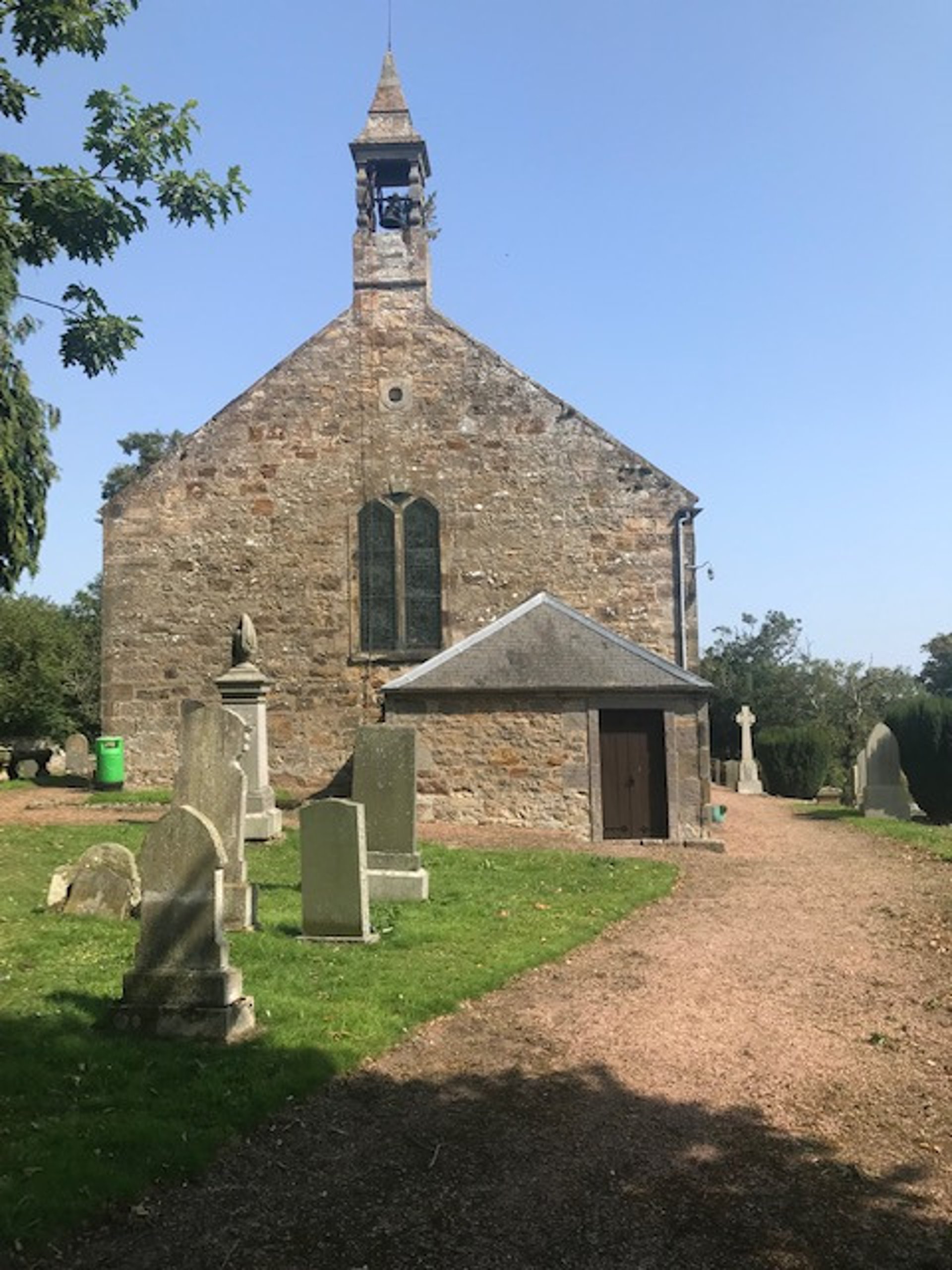20% SUMMER DISCOUNT OFF ALL SERVICES AND PACKAGES UNTIL 31 august 2025

Meet Me at the Cemetery Gates
A Graveyard Visit to Carnbee
Martin Gorrie
Discovering Family Ties at Carnbee Church, Fife: A Genealogist’s Gravestone Adventure
Introduction
Nestled in the rolling landscapes of Fife, Carnbee Church is a treasure trove for anyone tracing Scottish ancestry. As a professional genealogist, I recently visited this historic parish to study its gravestones in Fife and uncover the family stories carved into stone. If you’re researching genealogy in Scotland, particularly in Fife, Carnbee offers rich clues that can bring your family history to life.
Location & Historical Context
Carnbee Parish Church, near Anstruther in East Neuk of Fife, dates back to the medieval church in the 13th century and was rebuilt in the 17th century. Surrounded by farmland and panoramic views, Carnbee’s graveyard has become an essential stop for anyone interested in Scottish genealogy tours or graveyard research in Fife.
Its stones preserve not just names and dates but also insights into rural life, mortality, and migration in Scotland.
Gravestone Survey: Names, Ages & Inscriptions
During my visit, I estimated there are 120–150 gravestones in the churchyard, with inscriptions spanning from the early 1700s to the late 19th century.
Examples of stones include:
• Mary Sinclair – died 1752, age 6.
• James Robertson – died 1824, age 58.
• Helen McIntyre – died 1879, age 47.
• William Grant – died 1805, age 21.
• Eliza Brown – died 1789, age 34.
Genealogical Observations
The Carnbee gravestones provide:
- Family connections: identifying parents, spouses, and children.
- Vital statistics: names, ages, death dates for linking to Scottish parish records.
- Cultural insight: stone iconography (urns, weeping willows, Masonic symbols) reveals religious and social influences.
For genealogists researching Scottish family history in Fife, gravestones like these are often the missing link between birth, marriage and death records.
The History of Carnbee Church
Carnbee’s original church was established in the 13th century, rebuilt in the 1600s, and later renovated for parish use. While the building no longer hosts regular worship, the churchyard remains under local heritage care.
For those on a Scottish heritage tour or conducting ancestry research in Fife, Carnbee provides continuity between medieval history, post-Reformation parish life, and modern genealogy.
Why Gravestones Matter for Genealogy
Gravestone inscriptions at Carnbee can:
- Confirm Scottish ancestral names and dates.
- Cross-reference with parish registers and civil records in Fife.
- Provide evidence of local surnames such as Sinclair, Robertson, McIntyre, and Grant, helping genealogists track Scottish family surnames.
This combination of stone, story, and record makes graveyards in Fife a vital part of genealogical research in Scotland.
Tips for Genealogists Visiting Carnbee Church
- Use Scottish gravestone photography to document inscriptions.
- Check Fife Archives and parish records for supplementary information.
- Note recurring Scottish surnames in Fife to map out community connections.
- Visit nearby heritage sites such as Anstruther, Kingsbarns, and the East Neuk for a broader genealogical context.
Conclusion
A visit to Carnbee Church graveyard in Fife is an unforgettable experience for anyone researching Scottish ancestry. With over 120 gravestones, dating back to the 18th and 19th centuries, the site preserves names, family ties, and the lived history of Scotland’s rural communities.
For genealogists, historians, or heritage travellers, Carnbee is more than a churchyard—it is a gateway to Scottish family history.


Kingdom Research
Discover your family tree with expert research.
ancestry RESEARCH east neuk of FIFE
Family History Research
01333 460197
© 2025. All rights reserved. Design by Kingdom Web Design

